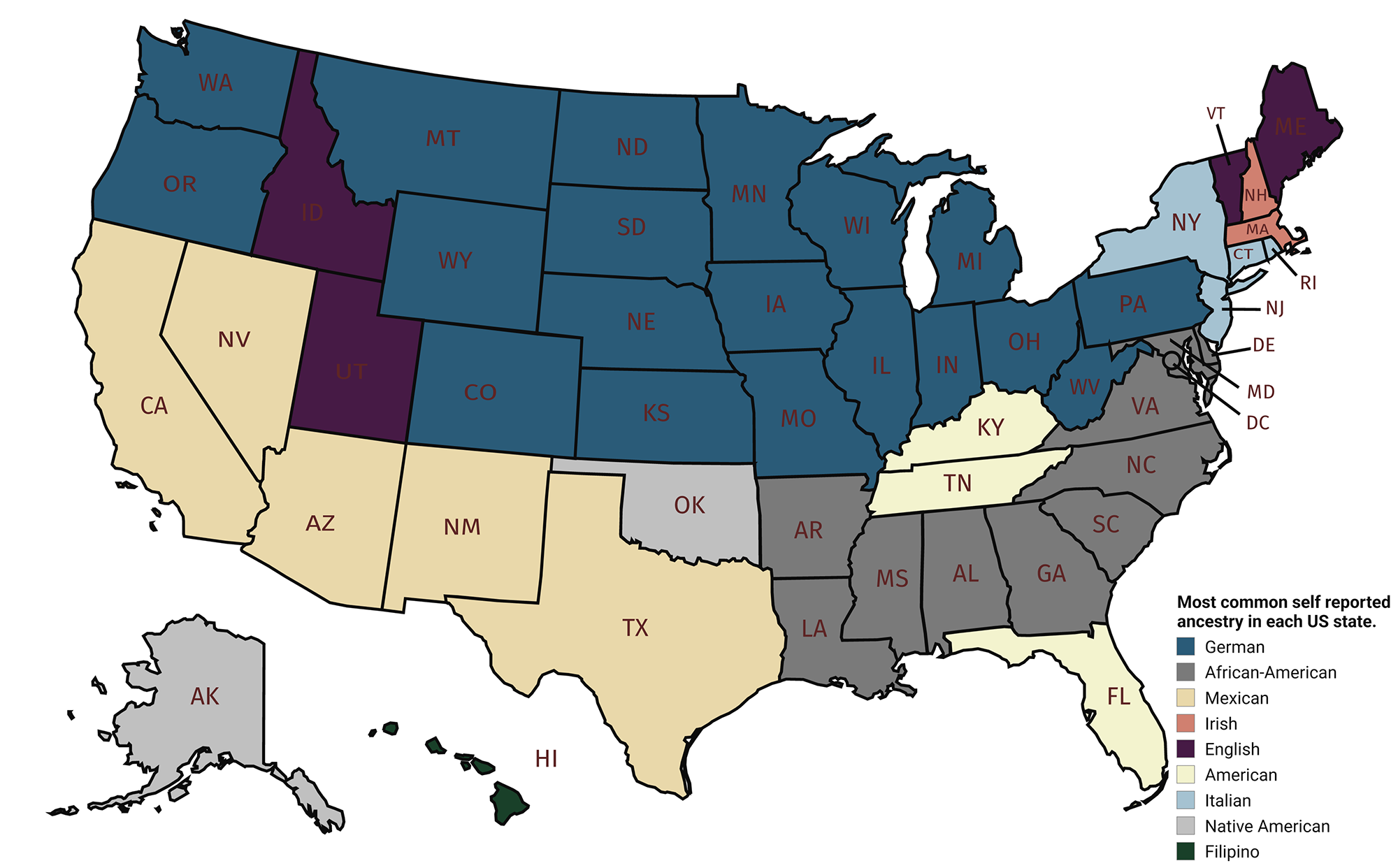Mapping Diversity: Largest Ethnic and Religious Groups by U.S. County
The United States is home to an extraordinary range of ethnic and religious identities, shaped by centuries of migration, settlement, and cultural evolution. A fascinating map created by Reddit user delugetheory offers a fresh perspective on this diversity by highlighting the largest ethnic and religious groups in each U.S. county.

Using data from the U.S. Census Bureau and the Association of Statisticians of American Religious Bodies (ASARB), this map reveals how communities are shaped not only by where they live but also by the historical and cultural forces that brought them there. Let’s explore what the map teaches us about the country’s unique regional identities and the stories behind them.
Exploring the Patterns
Evangelical Christianity in the South and Beyond
Evangelical Protestantism dominates much of the South, reflecting the deep cultural roots planted during the First and Second Great Awakenings in the 18th and 19th centuries. These religious movements transformed the South into what is often called the “Bible Belt,” where evangelical churches became central to community life.
Interestingly, Evangelical Protestantism also features prominently in parts of the Pacific Northwest, where settlers carried their faith during westward expansion in the 19th century. This spiritual tradition has persisted, connecting communities separated by thousands of miles.
Mainline Protestantism in the Midwest
The Midwest is heavily influenced by mainline Protestant traditions, particularly Lutheranism and Methodism, brought by German and Scandinavian immigrants in the 19th century. These groups settled in states like Minnesota, Wisconsin, and the Dakotas, leaving behind a legacy of small-town churches and community-focused faith. Even today, these denominations are integral to the region’s identity, reflecting the area’s immigrant past.
The Mormon Influence in the West
In Utah and parts of surrounding states, the map reflects the significant influence of The Church of Jesus Christ of Latter-day Saints. This stems from the migration of Mormon pioneers in the mid-1800s, seeking refuge from persecution in the eastern U.S. Their settlement in the Utah Territory laid the foundation for the religious and cultural character of this region, often referred to as the “Mormon Corridor.”
Hispanic Catholics in the Southwest
The Southwest stands out for its large Hispanic Catholic population, a legacy of Spanish colonization and Mexican governance before these territories became part of the United States. Catholic missions played a vital role in establishing settlements, schools, and cultural traditions, many of which endure today. The steady flow of migrants from Latin America has further cemented Catholicism’s influence in the region.
Native American Communities and Religion
In counties with significant Native American populations, particularly in the Southwest and Great Plains, the map highlights Catholicism and Mormonism. This reflects the historical impact of missionary efforts, which sought to convert Indigenous peoples during the 19th and early 20th centuries. At the same time, many Native American communities have blended these faiths with their own spiritual traditions, creating a unique cultural and religious identity.
African American Protestants in the Deep South
The Deep South is home to a significant African American Protestant population, rooted in the legacy of slavery and emancipation. During Reconstruction, Black communities formed their own churches as centers of worship, education, and activism. Denominations such as the African Methodist Episcopal (AME) Church continue to play an essential role in these communities.
Understanding the Bigger Picture
This map provides more than just geographic information; it tells the story of how history, migration, and culture have shaped American communities. From the influence of European immigration in the Midwest to the impact of Spanish missions in the Southwest, each region carries its own unique narrative.
By examining the map, we gain a better understanding of how religion and ethnicity intersect to create the distinct character of American counties. Whether it’s the enduring legacy of immigrant traditions or the resilience of communities forging their own paths, this view of the U.S. is both a historical record and a reflection of the present day.
If you enjoy maps that showcase America’s diversity, check out these U.S. poster maps:
- USA Wall Map by National Geographic
- Historical Map of the United States Poster
- U.S. States and Capitals Educational Map
What do you think about the patterns revealed in this map? Are there stories from your own community that align with what you see here? Share your thoughts in the comments below!








